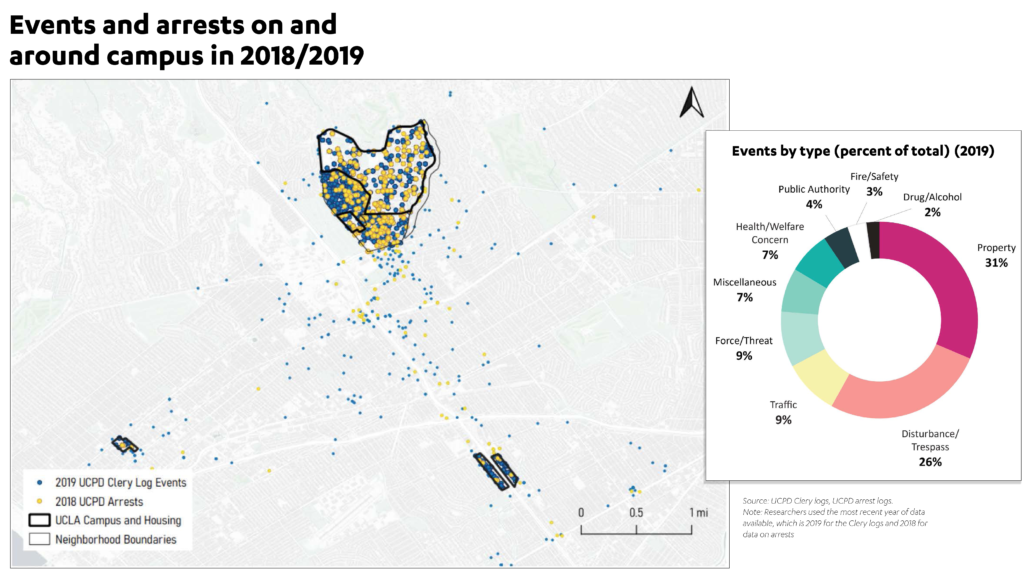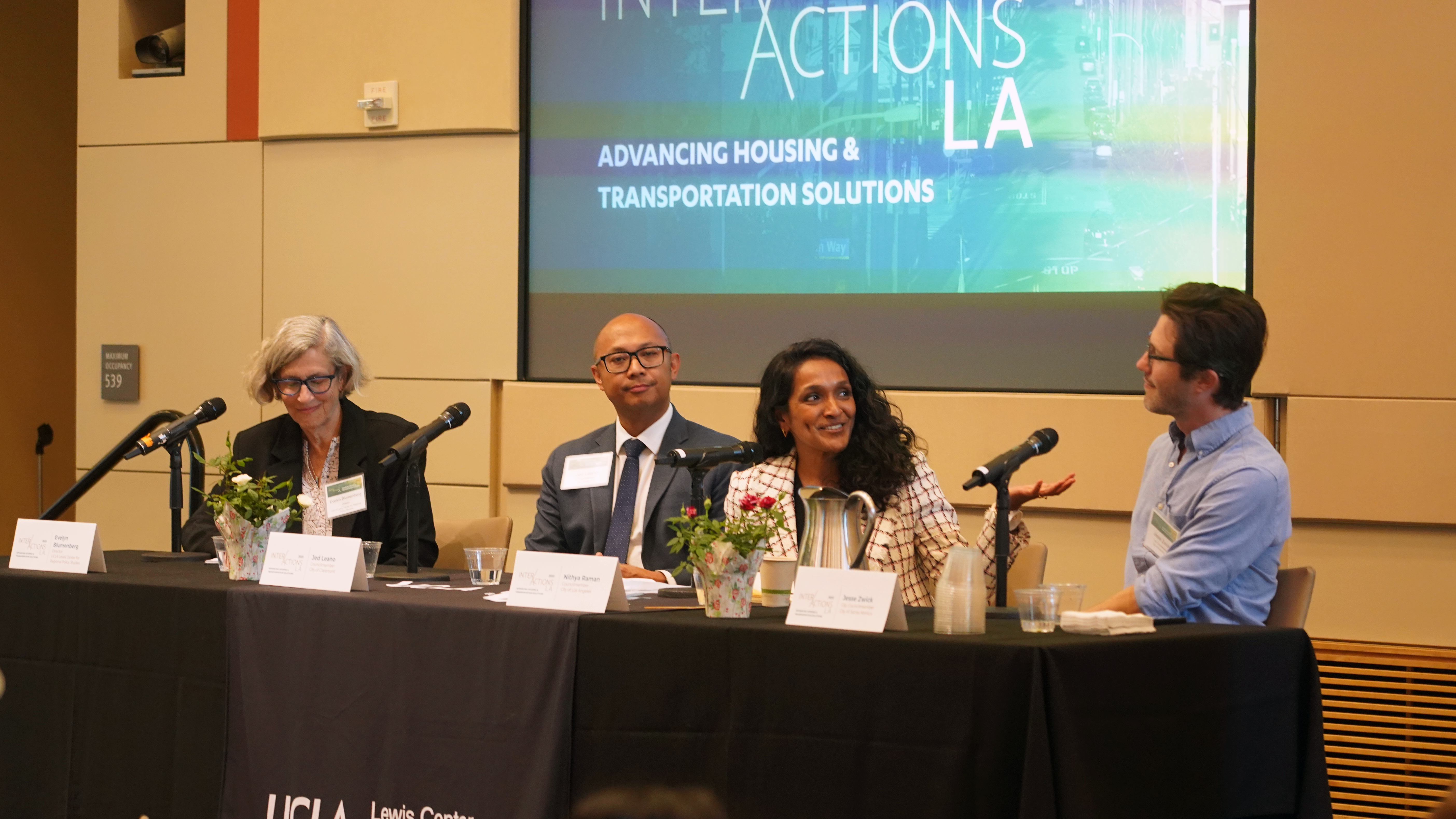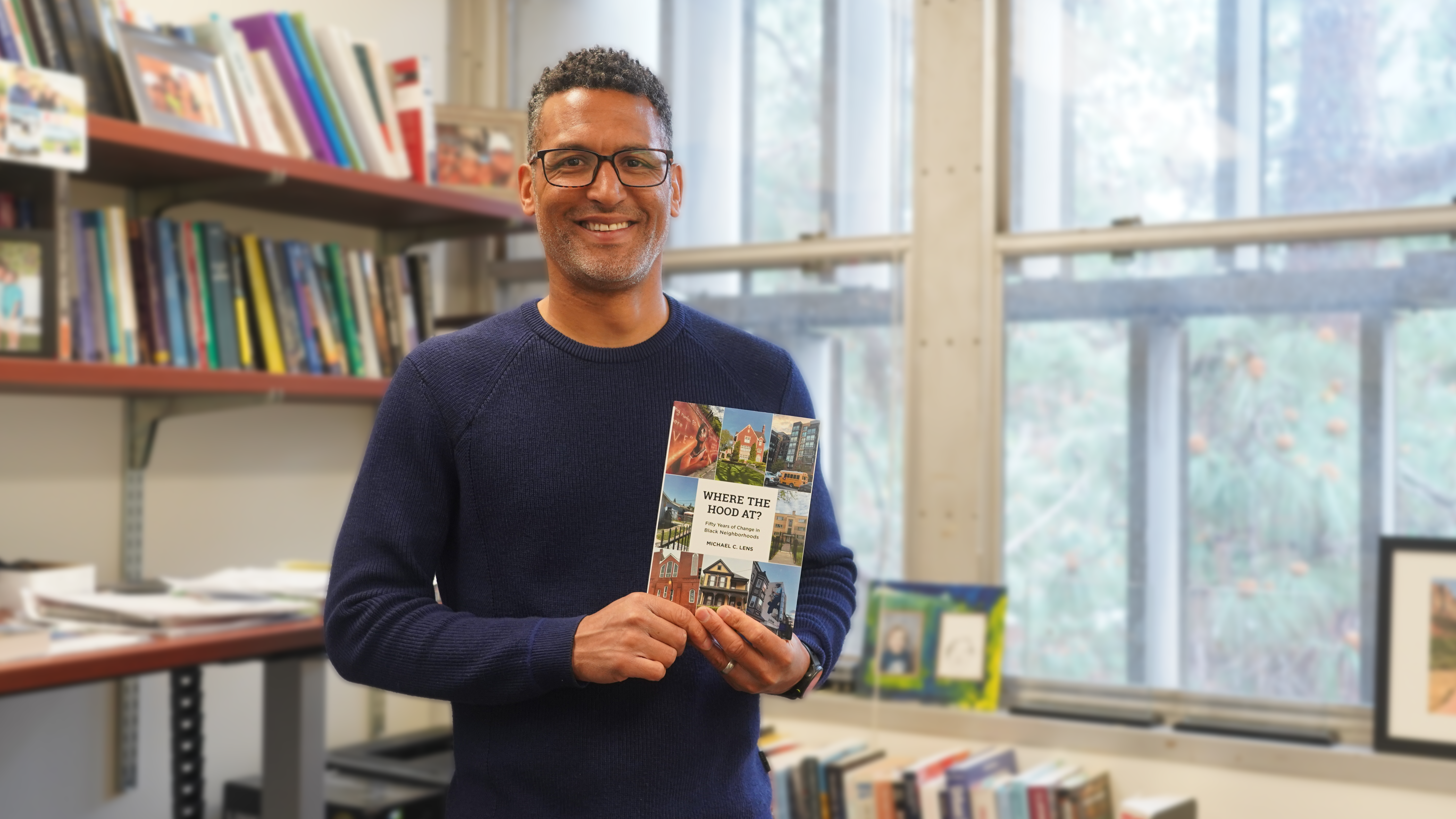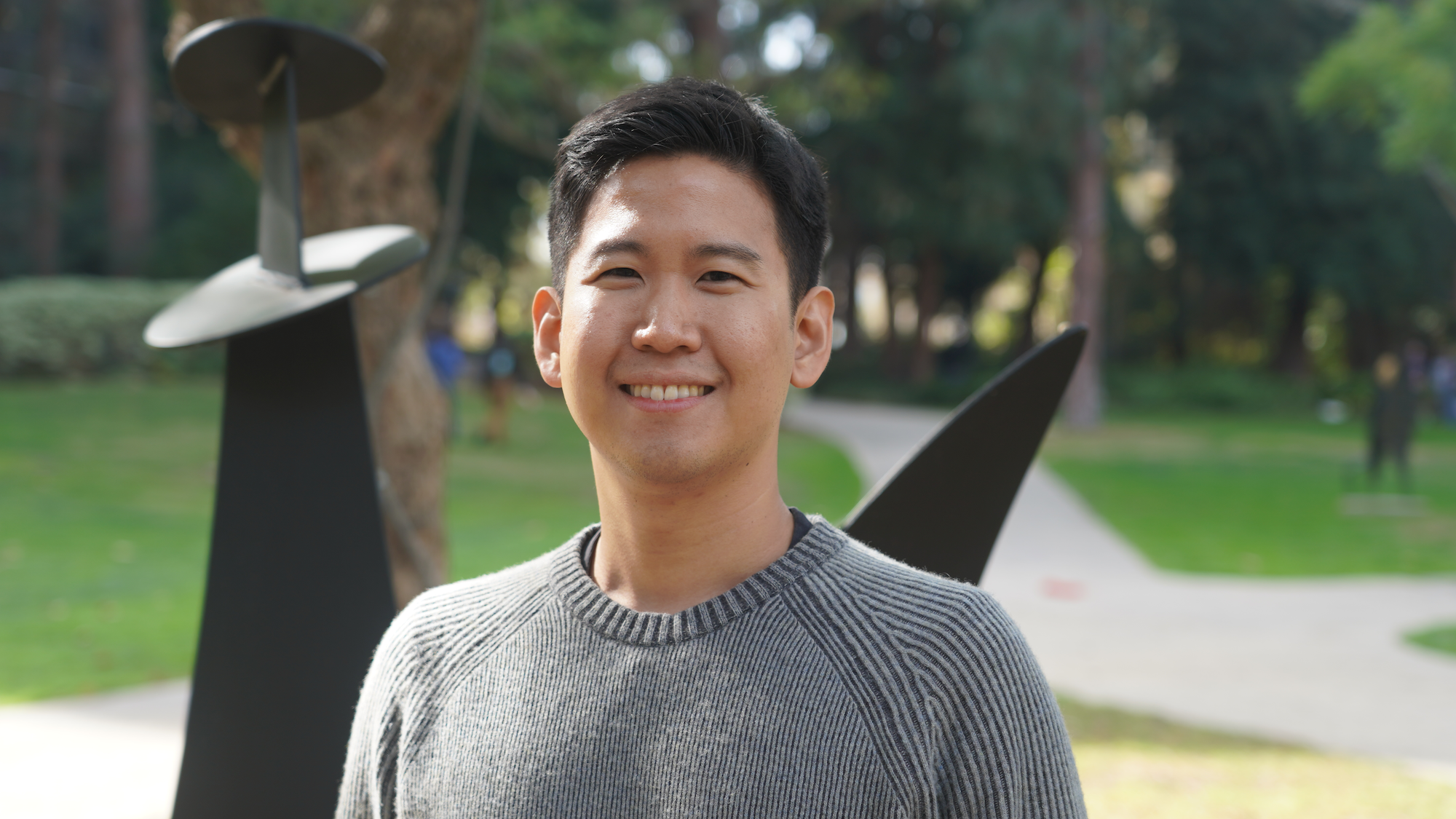
Policing at UCLA is analyzed in new study
Property-related incidents are the most frequent type of police-related event at UCLA, followed closely by incidents involving people whose presence or behavior is deemed disruptive or out of place, without any indication of violence, according to a new report from the UCLA Lewis Center for Regional Policy Studies and the UCLA Luskin Institute on Inequality and Democracy. The study examines police activity at UCLA based on data compiled in compliance with the Clery Act, which requires public disclosure by the Police Department at UCLA regarding the nature, date, time and location of incidents, as well as their disposition status or outcome. The researchers use maps and charts to visualize Clery Act data relating to events involving police, plus some fire department responses, in 2014 and 2019, with supplemental information focusing on arrests by the UCPD in 2018, the most-recent information available. Less than 10% of events involve force or threat of violence, they found, and data maps reveal that a substantial amount of UCPD activity and arrests occur off-campus, mostly in the greater Westwood area but also farther afield. Paavo Monkkonen, associate professor of public policy and urban planning at UCLA Luskin, helped oversee the study, working with Noah D. Zatz and Jennifer M. Chacón, professors of law at the UCLA School of Law, and Alejandra A Martinez, an undergraduate research assistant at the Lewis Center who studies economics and was the lead author. Their report also found that more than 80% of reported police activity during the study periods did not result in follow-ups for any asserted or possible crime.
This post was initially found on UCLA Luskin



